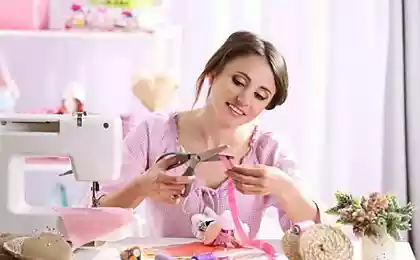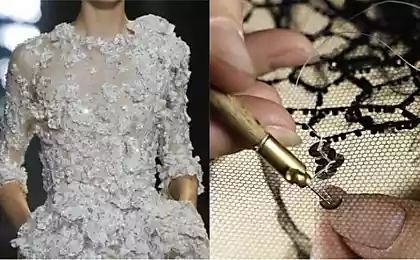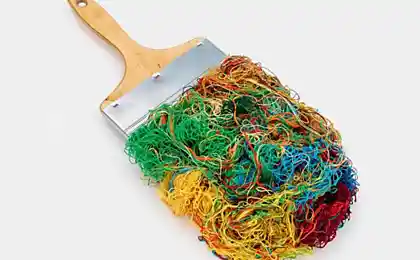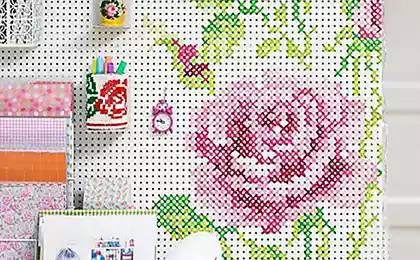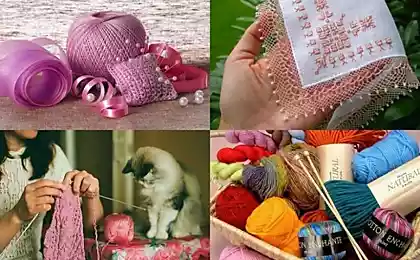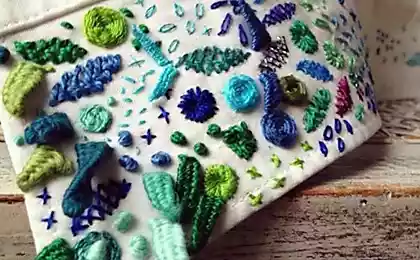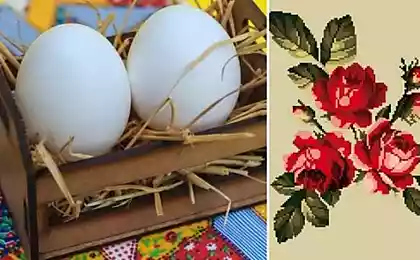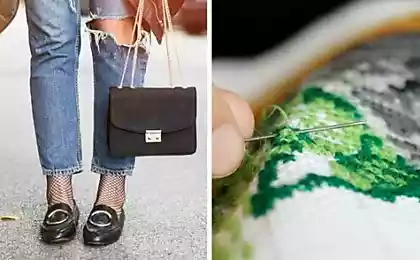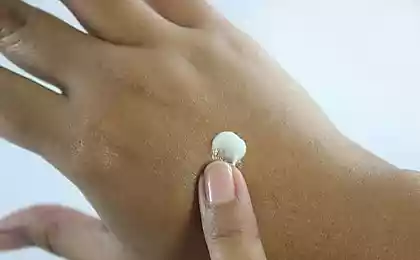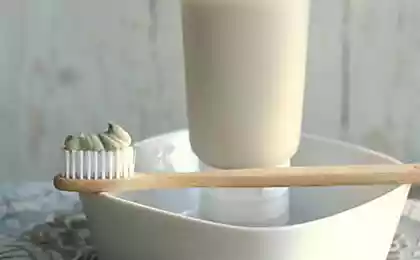219
Grandma without glasses could not fit a thread into the needle, showed her a tricky reception with a toothbrush
In junior high, I went to a sewing club. There I learned to sew, knit and embroidery beads. I didn’t like to embroidery with a cross, but I respected the muline needle more than the bead needle for its large ear. It was possible to make a beautiful keychain from the beads, but it was not immediately possible to fill the silk thread into a tiny ear. Now I know several ways to get a thread into the ear of any diameter. Let me tell you how to thread a needle if you don't have a thread on hand.

If you can not insert a thick thread into the needle for embroidery, make a loop from a thin thread and use it instead of a threadmaker. Put a noose in your ear and a thick thread in the noose. Now just put a thread loop through your ear. It's easy.
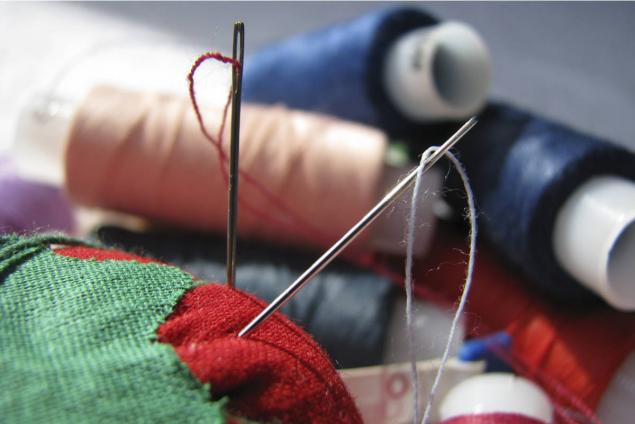
Wire Threadmakers are in any sewing store and cost pennies. But, if there is a thin wire at hand, you can build the device yourself. A small piece of wire folded in half, the thinner the wire, the better. Now extend the wire with a bent edge into the ear of the needle. String in the loop, loop back through the ear. Done.

Another original way to thread any thickness into the ear of the corresponding diameter. You will need a toothbrush with smooth bristles. Put the thread on the bristles, and with the eye of the needle press on the place where the thread begins. The eye will inhabit the bristles of the toothbrush. And the bristles will push the thread into the ear of the needle. I admit, it's a way for smart people, because you have to aim to hit the tip of the thread.

Simple friction will help to cope with the task, like a magic trick. Put the thread on your hand. Place the needle in the middle of the thread so that the needle is perpendicular to the thread and the needle's eye is located on the thread. Rub the eye of the needle against the thread for a few seconds, and it will wear itself into the needle.

Paraffin In order for the thread to get into the ear, you need to cut the tip with scissors and moisten the end of the thread. So the villi will not prevent the thread from arriving at its destination. But the fuzzy threads often stratify into fibers and complicate the task. Then you can rub the tip of the thread against the candle. The thread, like a string, will gain strength and uniformity and easily get into the needle. If there are no candles, you can rub the thread on the dry soap. Works well, too.

Cut a thin strip of paper that is wide enough to fit into the ear for embroidery. Fold the paper strip in half. Put the thread with the tip in the base of the paper fold and put it in the ear. And you can use a small piece of tape, from which the thread will not escape. Just tape them the edge of the thread instead of paper and go ahead.

As you can see, there are many ways to cope with the task, despite poor vision and different thread thickness. Not knowing these methods, I always tried to cut the tip of the thread evenly, and not to tear it with my hands. So the fibers didn't stop me from threading the needle. In general, there are special needles with an ear in the form of a pinch. On top of the eye is not whole, it helps effortlessly thread into the needle, without straining the eyes. How do you use it?

If you can not insert a thick thread into the needle for embroidery, make a loop from a thin thread and use it instead of a threadmaker. Put a noose in your ear and a thick thread in the noose. Now just put a thread loop through your ear. It's easy.

Wire Threadmakers are in any sewing store and cost pennies. But, if there is a thin wire at hand, you can build the device yourself. A small piece of wire folded in half, the thinner the wire, the better. Now extend the wire with a bent edge into the ear of the needle. String in the loop, loop back through the ear. Done.

Another original way to thread any thickness into the ear of the corresponding diameter. You will need a toothbrush with smooth bristles. Put the thread on the bristles, and with the eye of the needle press on the place where the thread begins. The eye will inhabit the bristles of the toothbrush. And the bristles will push the thread into the ear of the needle. I admit, it's a way for smart people, because you have to aim to hit the tip of the thread.

Simple friction will help to cope with the task, like a magic trick. Put the thread on your hand. Place the needle in the middle of the thread so that the needle is perpendicular to the thread and the needle's eye is located on the thread. Rub the eye of the needle against the thread for a few seconds, and it will wear itself into the needle.

Paraffin In order for the thread to get into the ear, you need to cut the tip with scissors and moisten the end of the thread. So the villi will not prevent the thread from arriving at its destination. But the fuzzy threads often stratify into fibers and complicate the task. Then you can rub the tip of the thread against the candle. The thread, like a string, will gain strength and uniformity and easily get into the needle. If there are no candles, you can rub the thread on the dry soap. Works well, too.

Cut a thin strip of paper that is wide enough to fit into the ear for embroidery. Fold the paper strip in half. Put the thread with the tip in the base of the paper fold and put it in the ear. And you can use a small piece of tape, from which the thread will not escape. Just tape them the edge of the thread instead of paper and go ahead.

As you can see, there are many ways to cope with the task, despite poor vision and different thread thickness. Not knowing these methods, I always tried to cut the tip of the thread evenly, and not to tear it with my hands. So the fibers didn't stop me from threading the needle. In general, there are special needles with an ear in the form of a pinch. On top of the eye is not whole, it helps effortlessly thread into the needle, without straining the eyes. How do you use it?
A man in the thickets of orchids will tell you which pots it is time to get rid of, the roots are stuffy
Gagauz on the market tried how to find sweet melon among hundreds of tasteless

